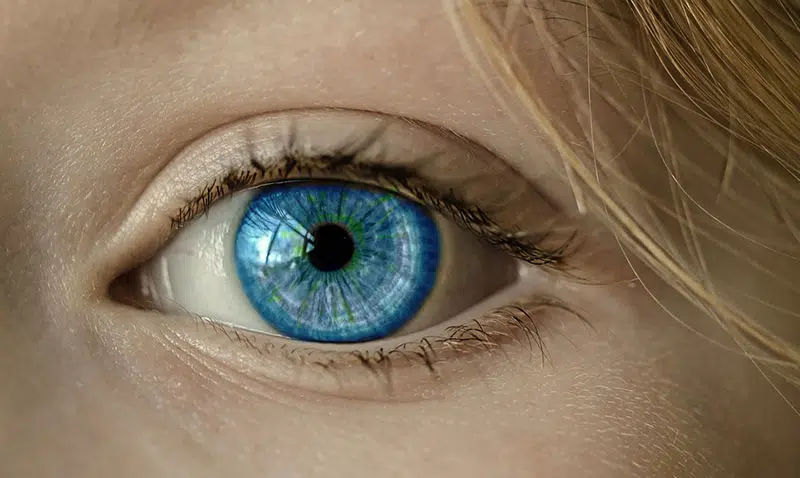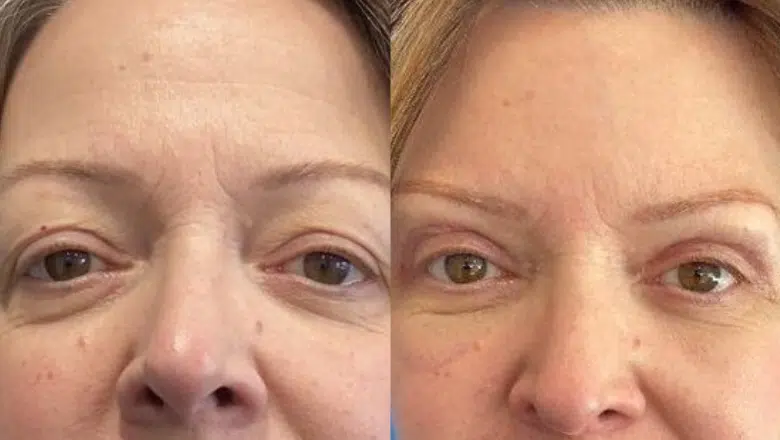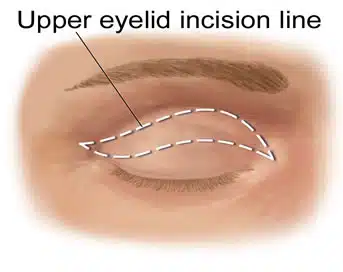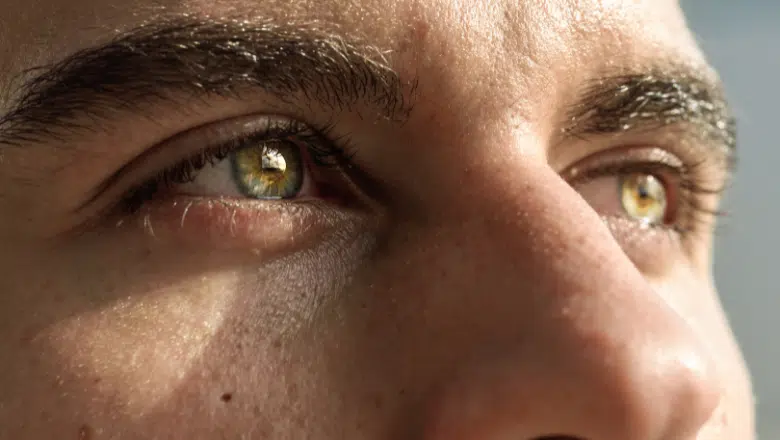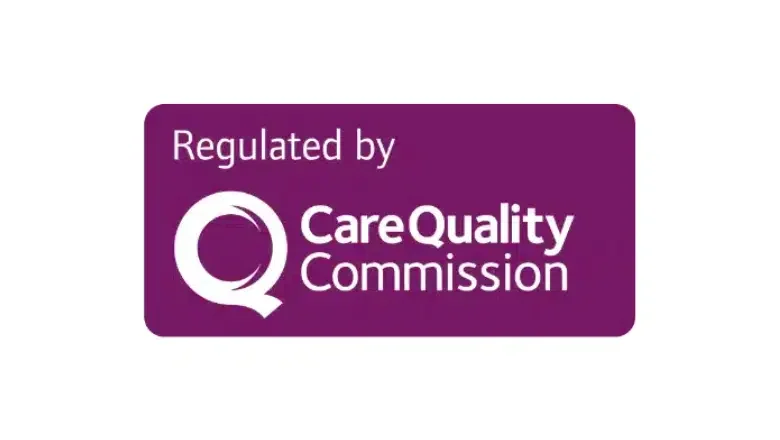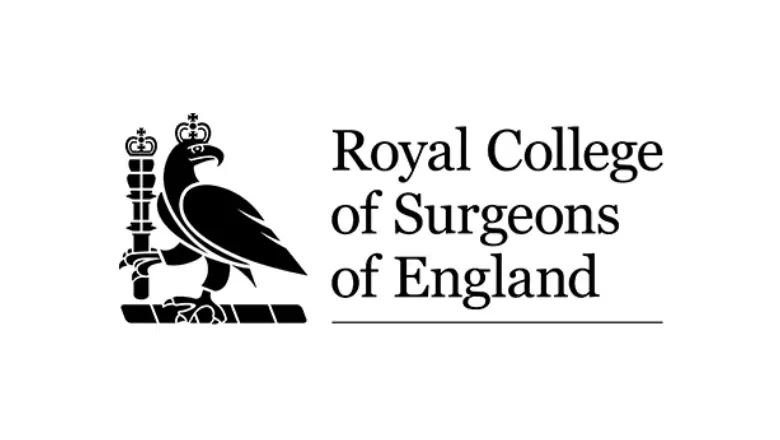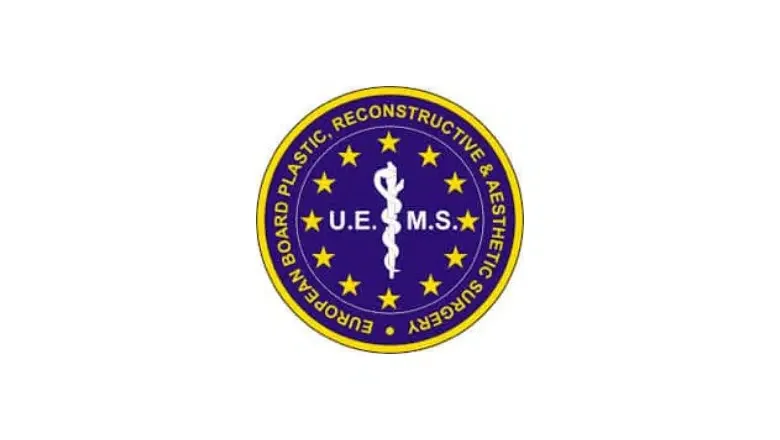Benefits of Upper Eyelid Surgery
Eyes are often the first thing people notice, making a strong initial impression. However, as we age, our eyelids can begin to droop, not only affecting how we look but sometimes even our ability to see clearly. This is where upper eyelid surgery steps in as a game-changer.
RELATED: What Conditions Can Eyelid Surgery Treat?
Opting for upper eyelid surgery could be a smart move for various reasons. If you’re looking to achieve a more youthful appearance around your eyes, this procedure can tighten and smooth out the skin, giving you that fresh-faced look. It’s also the go-to solution if droopy eyelids are starting to impact your vision, clearing the way for better sight. Additionally, if you’re seeking more balanced and symmetrical eyelids, upper eyelid surgery can make a significant difference.
Before & After Photos
Upper Blepharoplasty Procedure
Upper eyelid surgery, known for its transformative effects, has seen significant advancements, making it a less daunting choice for many. Today, the procedure is marked by its minimal invasiveness, an enhanced focus on preserving the natural skin and fat around the eyes, and a reduction in potential side effects and complications. Typically lasting around an hour, it’s performed under local anaesthesia, allowing for a more comfortable experience.
Before diving into the surgery, your surgeon carefully plans the procedure, marking the natural creases of your eyelids. These marks guide the removal of any excess skin, ensuring the changes look as natural as possible.
As the surgery progresses, the focus shifts to removing surplus skin and tightening the surrounding muscles. In some cases, any extra orbital fat is either trimmed away or repositioned to enhance the eye’s appearance. The procedure concludes with the surgical incisions being neatly sutured together; thanks to the use of absorbable stitches, the post-operative period is simplified, sparing you the concern of stitch removal.
One remarkable aspect of this surgery is how discreetly the incisions are placed. They’re designed to blend seamlessly with the natural folds of your eyelid, becoming virtually invisible as they heal over the following months. This subtle yet effective approach ensures that the results are aesthetically pleasing and natural-looking, reflecting a more alert and rejuvenated appearance.
Recovery after Upper Blepharoplasty London
After undergoing upper eyelid surgery, also known as blepharoplasty, it’s common to experience some bruising and swelling in the area surrounding your eyes. This usually lasts for about two to three weeks. During this recovery period, it’s crucial to give your eyes the rest and care they need to heal properly. One of the key precautions includes avoiding makeup for the initial weeks following the surgery. This step helps prevent any irritation or infection that could compromise your recovery.
For those who rely on contact lenses, you’ll need to take a break from them for a few weeks. This ensures that the healing process isn’t disturbed by the potential irritation that contacts can cause. If you’re concerned about your vision or sensitivity to light during this time, wearing sunglasses can be a good alternative. Not only do they protect your eyes from harsh sunlight, but they also offer a degree of privacy as you recover.
Follow-up appointments are an essential part of your post-surgery journey. These visits allow your surgeon to monitor your healing progress and ensure everything is on track. Additionally, if your surgeon has prescribed any medication, adhering to the prescribed dosage and schedule is important. This could include pain relievers or antibiotics to manage discomfort and reduce the risk of infection.
Side effects
After the procedure, it is common to experience bruising, puffy eyelids, and watery eyes. These are all normal and will fade after a few weeks. You will have scars from the incision, which will look pink but will fade over time and should not be noticeable.
Risks
As with every medical procedure, certain risks may occur. Potential risks include:
- Blurred or double vision
- Noticeable scarring
- Asymmetry of the eyes
- Haematoma – this is a pool of blood which collects under the skin and should disappear after a few weeks without any intervention.
- Excessive bleeding
- Infection
How Much Does Upper Blepharoplasty Cost?
At Centre for Surgery in London, the cost of upper blepharoplasty starts from £1,995 when performed under local anaesthesia. This base price covers the surgical procedure itself. However, the final cost can vary depending on factors such as the complexity of the surgery, the need for additional procedures, and the type of anaesthesia used. For instance, combining upper blepharoplasty with other facial rejuvenation treatments or opting for general anaesthesia may increase the overall cost.
Centre for Surgery offers flexible financing options to help manage the cost of the procedure. Through their partnership with Chrysalis Finance, patients can access various payment plans, including interest-free options, to spread the cost over time.
RELATED: How Much Does a Blepharoplasty Cost in London? – Eyelid Surgery Prices
Choosing The Best Upper Eyelid Surgeon in London
Finding the perfect surgeon for upper eyelid surgery in London, especially when you’re considering it for cosmetic enhancements, is crucial for achieving the desired outcome. The journey towards selecting the right surgeon should be meticulous, informed, and centred around your needs and safety. Here are essential steps and questions to guide you in making this pivotal decision:
Experience Matters
Prioritise selecting a surgeon with extensive experience in upper eyelid surgery. Experience doesn’t just offer reassurance; it significantly impacts the quality of results. Surgeons who perform this procedure regularly are more likely to understand the nuances and complexities of the surgery, ensuring a higher success rate.
Visual Evidence
Request to see before and after photos of previous patients. These photographs are not just evidence of the surgeon’s ability but also provide a realistic expectation of the outcomes you can achieve. They offer insight into the surgeon’s aesthetic judgment and skill level.
Engage in Meaningful Dialogue
Preparing questions in advance can help you understand more about the surgeon’s approach and your suitability for the surgery. Here are some vital questions to ask:
-
- “How many eyelid surgeries have you performed?”
- “Will you be personally involved in my recovery process?”
- “How do you manage complications should they arise?”
- “What criteria do you use to determine if I’m the right candidate for this procedure?”
- “Could you share before and after pictures of your upper eyelid surgery patients?”
Expertise in Aesthetics and Functionality
Ensure that your surgeon not only has an eye for aesthetics but also understands the functional aspect of eyelid surgery. The goal is to enhance your appearance while preserving or improving eyelid functionality.
Post-Surgery Care and Complications Management
It is essential to understand the surgeon’s role in the recovery phase and their approach to handling potential complications. A good surgeon should provide comprehensive aftercare and have a clear plan for managing any issues that may arise post-surgery.
RELATED: Best Eyelid Surgeon in London
FAQs
What is an upper blepharoplasty?
An upper blepharoplasty is a surgical procedure designed to remove excess skin and sometimes fat from the upper eyelids. It helps to restore a more alert and youthful appearance by correcting droopy or hooded eyelids. In many cases, patients also notice their vision improves if their overhanging skin was blocking the upper part of their visual field.
Who is a suitable candidate for the procedure?
This procedure is usually recommended for individuals who have sagging skin or puffiness around the upper eyelids. If your eyelids feel heavy, interfere with your eyesight, or make you look tired or older than you feel, you may be a good candidate. Your overall health should be stable, and realistic expectations are important. Your surgeon will assess your face, eyelid structure, and skin during the consultation to ensure it’s the right option for you.
Is upper eyelid surgery only for cosmetic reasons?
Not always. While many people choose the surgery to enhance their appearance, some undergo it for medical reasons. If your droopy eyelids are affecting your vision or causing discomfort, the procedure may be considered functional rather than purely aesthetic. This distinction can sometimes affect whether you’re eligible for financial support through insurance or other schemes.
How long does the surgery take?
It’s a relatively quick operation. Most upper blepharoplasty procedures are completed within 60 to 90 minutes. It is commonly performed as a day case, which means you can usually go home on the same day.
What kind of anaesthesia is used?
The surgery is often carried out under local anaesthetic with or without light sedation. This keeps you comfortable without the need for a general anaesthetic. However, if you’re anxious or your surgeon feels it’s more suitable, a general anaesthetic can be offered.
What is the recovery time after the surgery?
You’ll need to take it easy for a few days after the procedure. Swelling and bruising are very common and may take around one to two weeks to settle. Most people return to work or social activities after a week, although full healing takes a bit longer. You’ll be given advice on how to care for your eyes, when to resume activities, and what signs to look out for.
Will there be visible scarring?
There will be a scar, but it’s usually well hidden in the natural fold of the eyelid. Over time, it tends to fade and becomes barely noticeable. Keeping the area clean, following aftercare instructions, and protecting your skin from the sun will help the healing process.
How long do the results last?
Results from upper blepharoplasty are generally long-lasting. For most patients, the improvements remain visible for ten years or more. However, the natural ageing process continues, so it’s possible that skin may gradually loosen again over time.
Are there any risks or complications?
As with any surgical procedure, there are some risks. These may include bruising, swelling, infection, scarring, or asymmetry between the eyes. Rare complications such as dry eyes or changes in eyelid function can occur. Choosing a highly experienced oculoplastic or facial surgeon helps minimise the risk of problems and ensures a safer, more predictable outcome.
Can it be combined with other procedures?
Yes, many patients choose to combine upper blepharoplasty with other treatments such as lower eyelid surgery, brow lift, or non-surgical procedures like anti-wrinkle injections. Doing so can create a more balanced and refreshed look across the whole face.
When will I see the final results?
You’ll start to notice improvements quite early on, especially as swelling goes down. However, it usually takes several weeks for all the swelling to subside and for the final shape of your eyelids to settle. Most people see the full result by six to eight weeks after surgery.
Does the procedure hurt?
Discomfort is usually minimal. Most patients describe a sensation of tightness or mild soreness around the eyes for a few days. Pain relief is usually only needed for a short time and is often managed easily with over-the-counter medication.
Will I need to take time off work?
Yes, it’s best to plan for some downtime. While some people return to work after a few days, others prefer to take at least a week off to allow bruising and swelling to settle. It depends on the nature of your job and how comfortable you feel during recovery.
Do I need a referral from my GP?
You don’t need a GP referral for a cosmetic blepharoplasty. You can book directly with Centre for Surgery. However, if the surgery is being considered for medical reasons, your GP or optometrist may refer you for further assessment.
About Centre for Surgery
Centre for Surgery is a leading cosmetic surgery clinic based in London, known for expert-led procedures, individualised patient care, and day case surgery excellence. Our team of specialist surgeons focuses on achieving natural results in a safe and welcoming environment.
